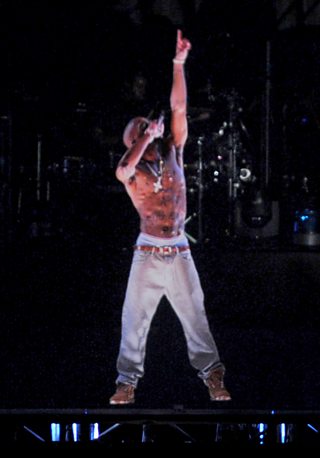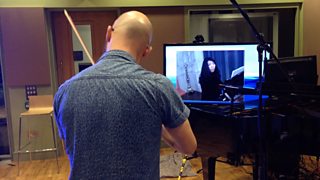The broadband played on: Linking musicians across the world
13 April 2015
As internet technology advances, performers are finding new opportunities to collaborate and create online. Arts Technologica on BBC Radio 4 examines how the digital revolution is nurturing new artforms. MARTHA LANE FOX writes for BBC Arts about what the online future holds for singers, actors and musicians.

The internet is not only helping us change the way we make art, but is also helping us to create new forms of art.
The spread of fibre optics is the latest stage in an ongoing revolution changing almost every aspect of our lives. Quicker network speeds don't just mean we can download movies and music faster.
New technology will transform the way musicians compose, rehearse and perform
They're opening up new ways for musicians to collaborate remotely. They can make music together when they're not even in the same country - saving time, travel costs and the environment.
Musician and video director Kevin Godley, who found fame in the 1970s with 10cc, wants to democratise the process of making music with his WholeWorldBand app. It allows musicians to make music with anyone, anywhere on the planet. And composer Eric Whitacre's Virtual Choirs have attracted singers from all over the world including countries as diverse as Libya, Sudan and Cuba.
Broadband internet celebrated its 15th anniversary in March 2015. In the UK 1GB connections are available, but in countries like South Korea 10GB networks are now on the horizon.
While faster network speeds have allowed us to share videos over the internet, it's still been tricky for musicians to perform together in real-time over distances because of the time delay or latency which makes precise musical timing difficult. But that's all about to change with new technology that will transform the way musicians compose, rehearse and perform live.
Edinburgh’s Napier University and the Royal College of Music have been trialling the LOLA (Low Latency) audiovisual streaming technology. It allows musicians to play together remotely in real-time in audio and video.
LOLA relies on the fast education and research networks which connect universities across the world, like the UK's Janet network, to send uncompressed high-quality audio and HD video between locations. This significantly reduces the latency to a level that makes real-time interaction possible.
But how does it compare to playing with a musician in the same room? Surprisingly, it's not that different according to Rik Evans, violist with the BBC Scottish Symphony Orchestra. Once he got used to seeing his remote accompanist in Italy on a screen, Rik says that little things like being able to see his reflection on her piano made it easier to imagine she was actually in the same room.

Technologies like LOLA work effectively because research and education networks use high-speed synchronous connections, which can upload and download data at the same speed. But in most of our homes, uploading information to the internet is much slower than downloading.
Just imagine what would be possible if communication was in all directions at extraordinary speeds. It wouldn't just mean that technology is better at facilitating how music and musical arts are created - it may even create exciting new forms of art.
New York's Metropolitan Opera House has been pushing the boundaries in the way they distribute their operas to audiences around the globe since 2006. Their Metropolitan Opera Live in HD series transmits live opera performances via satellite to cinemas all over the world. But would they consider staging an opera where, say, one or more of the singers were remote?
I'm a huge fan of London's Young Vic theatre company, which is exploring ways to link with theatre companies in Cape Town and Rio de Janeiro via the internet in a ground-breaking new live production.
Producer Ben Cooper-Melchiors told me that not only do they have to figure out how this can be done over commercial networks, they also have to consider how to direct and stage manage a production where actors are thousands of miles apart – no mean feat.
Perhaps one of the most innovative uses of new technology in recent years is to bring dead musicians back to life. The company Musion stunned festival-goers at the Coachella Festival in the US in 2012 with their hologram of rapper Tupac Shakur performing on stage with Snoop Dogg. It will revolutionise the way we experience concerts in the future.
Arts Technologica is on BBC Radio 4 at 16:00 on Monday 13 April 2015

BBC SSO violist Rik Evans uses LOLA technology to play remotely with an accompanist on piano in Italy

